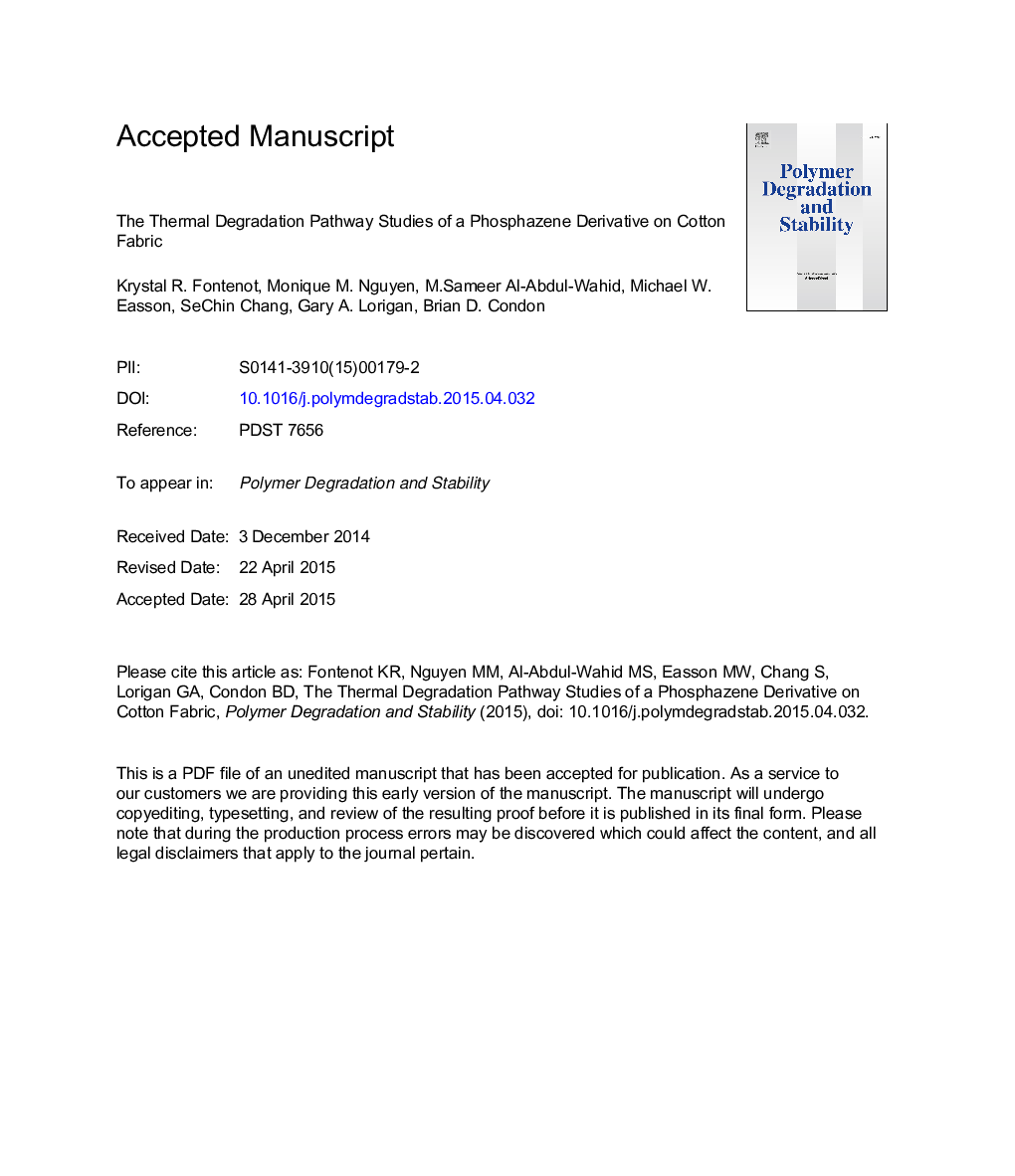| Article ID | Journal | Published Year | Pages | File Type |
|---|---|---|---|---|
| 5201286 | Polymer Degradation and Stability | 2015 | 35 Pages |
Abstract
Phosphazene derivatives have been recognized as promising flame retardants for numerous synthetic polymeric systems. However, limited studies are available for phosphazene derivatives on natural polymeric systems such as cotton fabric. The flammability and thermal stability of fabric treated with a phosphazene derivative 1,1,3,3-dihydroxybiphenyl-5,5-diaminoethanephosphazene (dBEP) indicated that only 9Â wt% add-on of dBEP was required to achieve promising flame retardant properties on cotton fabric. To understand the mode of action of dBEP, the thermal degradation pathways of the control and cotton fabric treated with dBEP were investigated. Thermogravimetric analysis coupled with Fourier transform infrared spectroscopy (TGA-FTIR) was used to follow the evolved gases produced by the control and treated fabrics during thermal degradation. Two techniques, attenuated total reflectance infrared spectroscopy (ATR-IR) and solid-state nuclear magnetic resonance (NMR) were employed to examine the degraded residues of the unburned fabrics, burned fabrics, and dBEP. The results show that dBEP undergoes decomposition to produce phosphoric acid and polymerization to form phospham-like derivative that are known to retard fire.
Keywords
Related Topics
Physical Sciences and Engineering
Chemistry
Organic Chemistry
Authors
Krystal R. Fontenot, Monique M. Nguyen, M. Sameer Al-Abdul-Wahid, Michael W. Easson, SeChin Chang, Gary A. Lorigan, Brian D. Condon,
